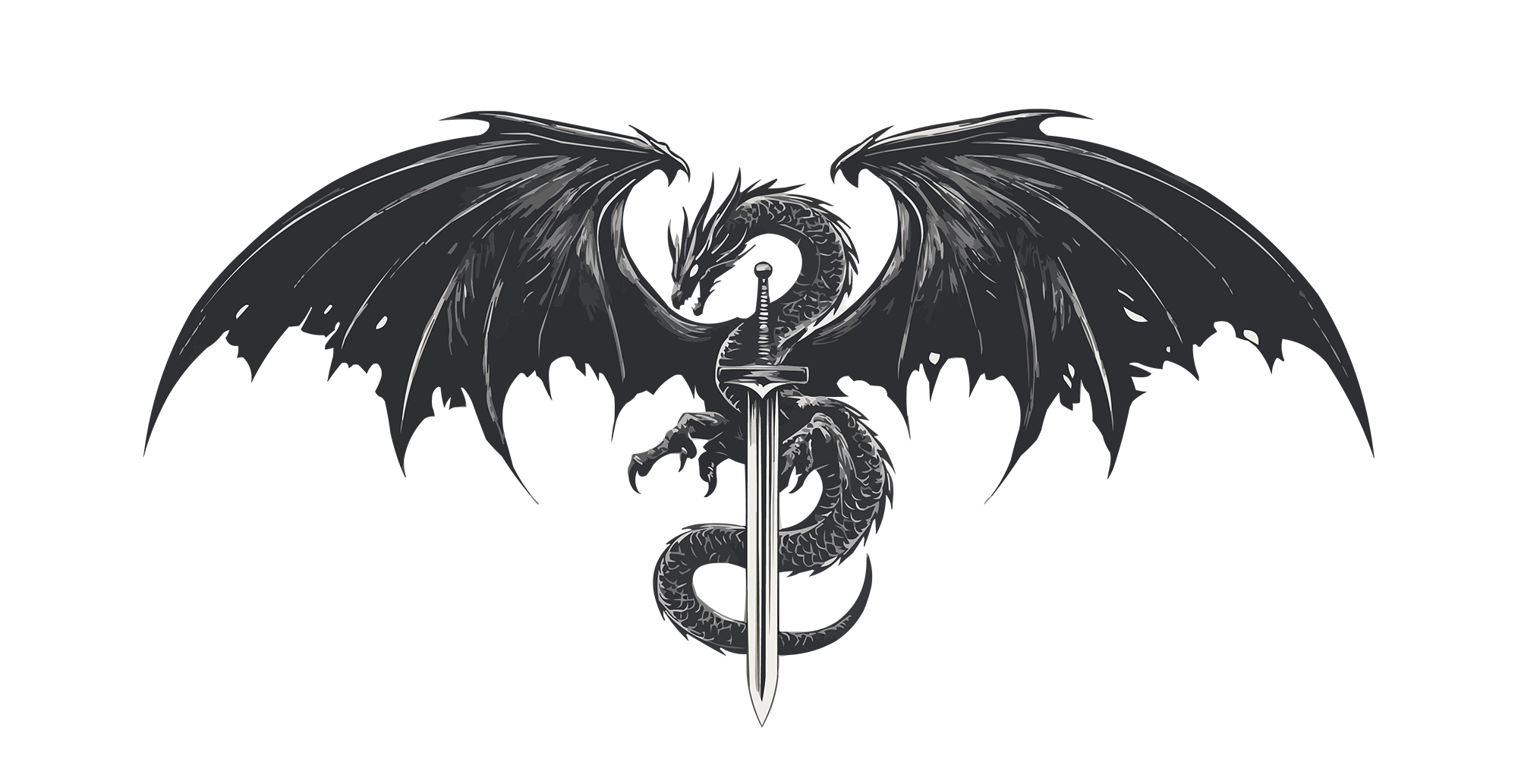DISCUSSING
In the Shadow of the Spire – Session 41B: The Return of Arveth
At Myraeth’s, they found a bag of holding formed from links of golden chain with a dragon worked in crimson links within it. It was larger than the ones they already owned and Tee – envying the dragon design – was depressed to find it was too bulky and heavy for her to carry.
Ranthir took it instead, nesting it among his many bags and pouches.
Something you may notice throughout the campaign journal is me giving specific, unique descriptions to various items. Sometimes I’ll even go so far as to prep visual handouts for them.
This is probably even more prevalent at the actual table, since only the most notable or pertinent examples actually make it into the journal.
(I should mention that I’m not prepping all of these ahead of time. A lot of them – including the bag of holding described above – are being improvised at the table. The principles of smart prep apply here.)
Some of these descriptions end up being ephemeral – useful for a moment to conjure an image of the world before the inner eyes of the players, but otherwise largely or entirely forgotten.
Others, however, will stick.
Which ones?
Nobody knows.
Sometimes I try to predict it (“this is so cool, they’ll obviously remember it forever!”), but I’m almost certainly wrong more often than I’m right. What sticks with this sort of thing is usually a lot more situational than you might think. Attention and memory can be fickle things, and which objects sentimental value and notoriety attaches to often has at least as much to do with what’s happening to both characters and players at that precise moment as it does the object itself.
The point, though, is that for anything to stick you have to keep throwing stuff out there. Enough stuff that you can start winning the numbers game.
Although, on the other hand, you don’t want to throw out so much stuff that it overwhelms the players and becomes indistinguishable noise. Not every rusty sword the PCs find in a moldering crypt needs to be lovingly detailed. And, if you are giving an item the bespoke treatment, you don’t need to lavish it with multiple paragraphs. Usually just one or two cool details will get the job done. (Maybe three on the outside.) Even if you know that not every item you describe will ultimately stand out, you still want every object to have the opportunity to do so.
Which is why, in D&D, I’ll often focus this descriptive detail on magic items. It inherently narrows the field for me. I also want magic items to feel special. For example, it’s easy for every bag of holding to glob together into a generic nonentity, and they really shouldn’t.
(Although by no means should this dissuade you from occasionally hyping up a mundane item with a cool description. It certainly doesn’t stop me.)
This is not going to be a comprehensive discussion of all the different ways you can give objects cool descriptions, but here are a few things I like to think about.
First, what’s the utility of the object? What does it actually do? How could that be reflected in the structure of appearance of the object?
For example, a staff of fire gives its wielder resistance to fire damage and can be used to create flame-based effects (burning hands, fireball, wall of fire). Some quick brainstorming suggests various options:
- Someone attuning to the staff is limned in a flickering flame.
- The staff is topped be a large ruby, inside which is trapped an eternally burning flame (and all the various fire spells blast out from this ruby).
- The entire staff is actually made from a frozen flame.
- The staff is warm to the touch.
- When one attunes to the staff, it scorches the hand holding the staff, leaving a brand depicting the arcane sigil of the wizard who created it.
- The staff is a long shard of obsidian, split down the middle. To create one of the staff’s fire effects, pull the two ends of the staff apart, revealing the heart of flame held within.
Second, add one other purely decorative or incidental detail. If the utility hasn’t already added some flash to the item, this is a good opportunity to do so. These details might also suggest ownership, origin, or similar information. (Which may just be flavor, but could also reveal relevant information about the situation or scenario.)
Let’s do another one. A keycharm, from Eberron: Rising from the Last War, allows you to cast alarm, arcane lock, and glyph of warding spells that alert the holder of the keycharm if they’re triggered or bypassed. The item description suggests that this looks like a “small, stylized key.” If we stick that, we might still look at options like:
- The key is formed from a black stone with strange purple veins running through it.
- The key is made from taurum, the true gold and its bow bears the sigil of House Abanar.
- The key is a living “bud” sprouted from the heartwood of a dryad’s tree by druidic arts.
- A plain key of battered copper, but the bits of the key are a whirling, ever-shifting blur.
As you’re improvising these descriptions, remember that you can put your thumb on the scale of the party’s reaction by thinking about what you know the players or their characters already love (e.g., Tee’s infatuation with dragons) or hate.
(I would honestly pay good money for a book that was just a dozen different “looks” for every magic item in the Dungeon Master’s Guide.)
Campaign Journal: Session 41C – Running the Campaign: Home Bases
In the Shadow of the Spire: Index












